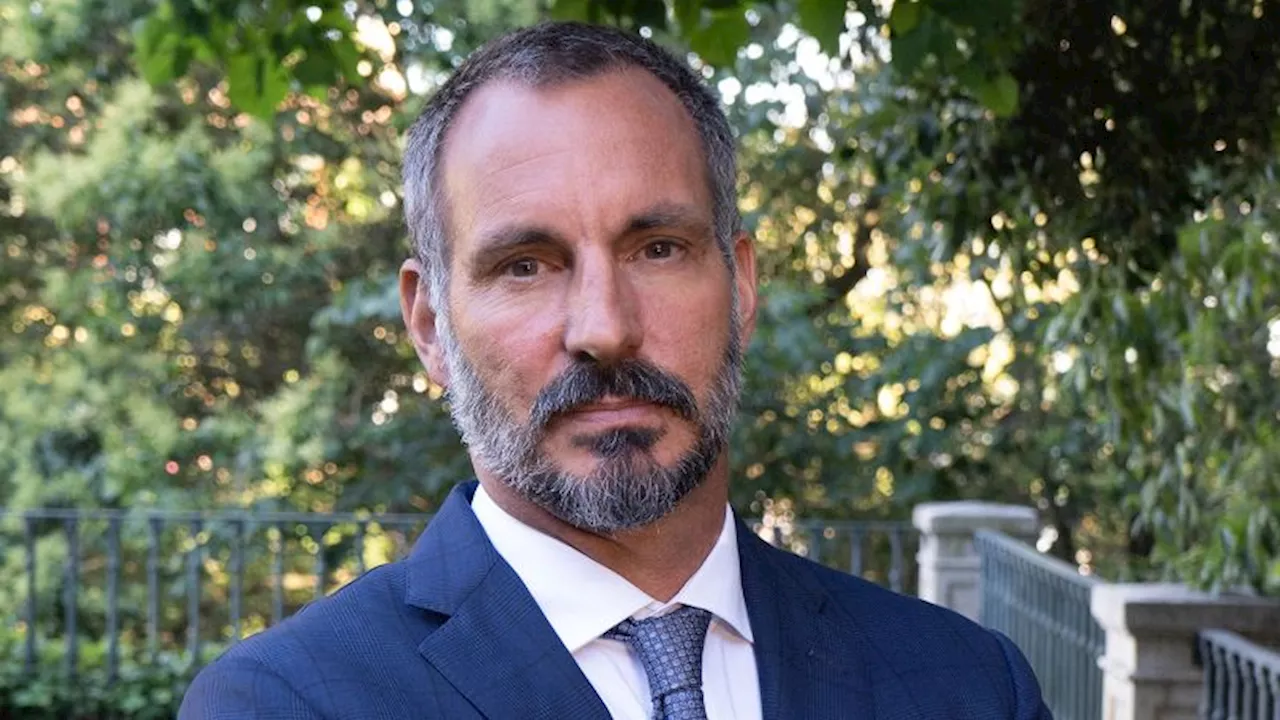This clinical practice update from the American Gastroenterological Association (AGA) summarizes current evidence and expert opinions on peroral endoscopic myotomy (POEM) for treating achalasia and other esophageal motility disorders.
The American Gastroenterological Association (AGA) has released a clinical practice update summarizing current evidence and expert opinions on peroral endoscopic myotomy (POEM) for treating achalasia and other esophageal motility disorders .
Dennis Yang, MD, with the Center for Interventional Endoscopy, AdventHealth, Orlando, Florida, emphasized in an AGA podcast about the update that any patient suspected of having achalasia or experiencing difficulty swallowing should undergo a thorough diagnostic workup, encompassing clinical history, medication review, and appropriate tests. Yang stressed that diagnosis should not solely rely on isolated tests but should be based on a comprehensive assessment of the patient's clinical picture. Since its introduction over a decade ago, POEM has gained widespread acceptance due to its proven efficacy and safety profile. Yang noted that POEM demonstrates comparable or even superior outcomes to laparoscopic Heller myotomy and pneumatic dilation for both type I and type II achalasia, with particularly positive results for type III achalasia. However, he emphasized that treatment selection should consider various factors beyond disease phenotype, including patient characteristics and local expertise.The update highlights that both anterior and posterior tunnel approaches during POEM exhibit comparable success rates and post-procedure reflux rates. Tunnel orientation should be individualized based on the patient's surgical history and the endoscopist's preference. Furthermore, the optimal length of the myotomy in the esophagus and cardia, in relation to treatment effectiveness and post-procedure reflux risk, remains an area of ongoing investigation. Adjunct techniques, such as real-time intraprocedural functional luminal impedance planimetry, may be considered to tailor or confirm the adequacy of the myotomy. The update also suggests that same-day discharge after POEM can be feasible for select patients who meet specific discharge criteria. Conversely, patients with advanced age, significant comorbidities, inadequate social support, or limited access to specialized care should be considered for hospital admission, regardless of their symptom severity. The document highlights a lack of definitive guidelines regarding the use and extent of antibiotic prophylaxis before and after POEM, suggesting that a single dose of antibiotics administered during the procedure may be sufficient.Regarding immediate post-POEM care, the update indicates that the clinical significance of routine esophagram or endoscopy immediately following POEM remains unclear. Testing can be employed based on local practice preferences and in situations where intraprocedural events or post-procedural findings necessitate further evaluation. Proton pump inhibitors are recommended following POEM due to the common occurrence of gastroesophageal reflux disease (GERD), affecting up to 65% of patients. Routine endoscopic surveillance is advised to monitor GERD, disease progression, and esophageal cancer risk, which is significantly elevated in individuals with achalasia. Yang emphasized that, similar to chronic conditions like diabetes and hypertension, achalasia requires long-term post-procedural surveillance to monitor disease progression and potential complications arising from reflux. He stressed the importance of surveillance regardless of patient symptoms, as many patients may remain asymptomatic. Yang recommended that primary gastroenterologists maintain a low threshold for referring patients back to the POEM endoscopist or a specialized esophageal center, as the nature of symptoms in these patients can be complex and often necessitates comprehensive diagnostic workup.The update states that evidence supporting POEM for esophagogastric outflow obstruction and other non-achalasia spastic motility disorders remains limited and should be considered on a case-by-case basis after less invasive approaches have been explored.
Peroral Endoscopic Myotomy (POEM) Achalasia Esophageal Motility Disorders Gastroenterology Clinical Practice Update
United States Latest News, United States Headlines
Similar News:You can also read news stories similar to this one that we have collected from other news sources.
 The Aga Khan, spiritual leader of Ismaili Muslims and philanthropist, dies at 88The Aga Khan, the spiritual leader of Ismaili Muslims, has died at 88 years old.
The Aga Khan, spiritual leader of Ismaili Muslims and philanthropist, dies at 88The Aga Khan, the spiritual leader of Ismaili Muslims, has died at 88 years old.
Read more »
 Aga Khan IV, Spiritual Leader of Ismaili Muslims, DiesThe Aga Khan IV, a billionaire religious leader and the 49th hereditary Imam of the Shia Imami Ismaili Muslims, has died surrounded by his family. He inherited the title from his grandfather at the age of 20 and led the community for over five decades. His successor has not yet been publicly announced, but is expected to be one of his children.
Aga Khan IV, Spiritual Leader of Ismaili Muslims, DiesThe Aga Khan IV, a billionaire religious leader and the 49th hereditary Imam of the Shia Imami Ismaili Muslims, has died surrounded by his family. He inherited the title from his grandfather at the age of 20 and led the community for over five decades. His successor has not yet been publicly announced, but is expected to be one of his children.
Read more »
 Aga Khan, Spiritual Leader of Millions, Dies at 88The Aga Khan, spiritual leader of the Ismaili Muslims, has died at the age of 88. He was known for his philanthropy and efforts to bridge the gap between Muslim societies and the West.
Aga Khan, Spiritual Leader of Millions, Dies at 88The Aga Khan, spiritual leader of the Ismaili Muslims, has died at the age of 88. He was known for his philanthropy and efforts to bridge the gap between Muslim societies and the West.
Read more »
 Rahim Al-Hussaini is named the new Aga Khan, spiritual leader of Ismaili MuslimsRahim Al-Hussaini has been named as the new Aga Khan, spiritual leader of the world’s millions of Ismaili Muslims. The 53-year-old was designated as the Aga Khan V, the 50th hereditary imam of the Ismaili Muslims, in his father’s will.
Rahim Al-Hussaini is named the new Aga Khan, spiritual leader of Ismaili MuslimsRahim Al-Hussaini has been named as the new Aga Khan, spiritual leader of the world’s millions of Ismaili Muslims. The 53-year-old was designated as the Aga Khan V, the 50th hereditary imam of the Ismaili Muslims, in his father’s will.
Read more »
 Prince Rahim Named New Aga Khan, Spiritual Leader of Ismaili MuslimsPrince Rahim Al-Hussaini, the eldest son of the late Aga Khan IV, has been named as the new Aga Khan V, the 50th hereditary imam of the Ismaili Muslims. The 53-year-old succeeds his father, who passed away Tuesday in Portugal. Prince Rahim, educated at Brown University, has served on the boards of various agencies within the Aga Khan Development Network, the spiritual leader's main philanthropic organization.
Prince Rahim Named New Aga Khan, Spiritual Leader of Ismaili MuslimsPrince Rahim Al-Hussaini, the eldest son of the late Aga Khan IV, has been named as the new Aga Khan V, the 50th hereditary imam of the Ismaili Muslims. The 53-year-old succeeds his father, who passed away Tuesday in Portugal. Prince Rahim, educated at Brown University, has served on the boards of various agencies within the Aga Khan Development Network, the spiritual leader's main philanthropic organization.
Read more »
 New Aga Khan named: Rahim Al-Hussaini succeeds father as Ismaili Muslims’ leaderRahim Al-Hussaini was named Wednesday as the new Aga Khan, spiritual leader of the world’s millions of Ismaili Muslims, following the death of his father.
New Aga Khan named: Rahim Al-Hussaini succeeds father as Ismaili Muslims’ leaderRahim Al-Hussaini was named Wednesday as the new Aga Khan, spiritual leader of the world’s millions of Ismaili Muslims, following the death of his father.
Read more »
